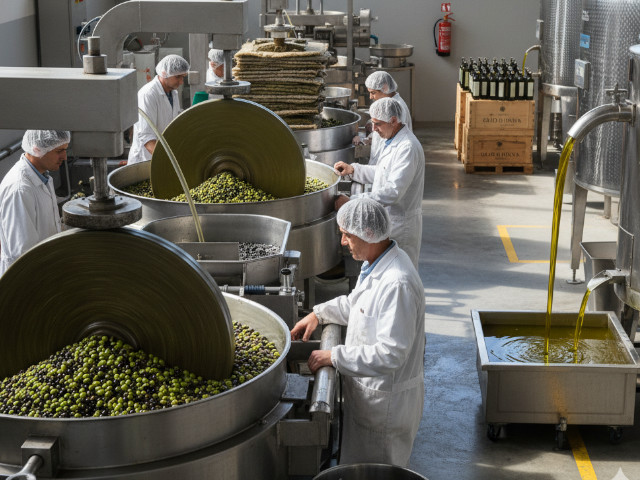The Olive Oil of the Belice Valley: Excellence and Productivity

The Nocellara del Belìce Cultivar
The Nocellara del Belìce is the most representative and widespread olive variety in the valley. It's a dual-purpose cultivar, meaning it can be used for both oil production and as a table olive. This versatility is a key factor in the local economy. The Nocellara del Belìce table olive is highly valued for its firm pulp and delicate flavor, while the oil produced from it is known for its intense fruitiness and notes of tomato, almond, and artichoke.
The oil made from this cultivar has earned the Protected Designation of Origin (PDO) "Valle del Belìce" status, which certifies its origin and quality, protecting both producers and consumers. The PDO sets precise rules for production, from the harvesting of the olives—which must be done by hand or with mechanical means that don't harm the plant—to the pressing, which must occur within a few hours of harvesting to preserve the oil's organoleptic properties.
Productivity and Sustainability
Olive productivity in the Belìce Valley is influenced by several factors, including climate, agronomic techniques, and the management of the olive groves. The region's soil and climate, with clay soils and a mild climate, are ideal for olive cultivation.
In terms of yield, a Nocellara del Belìce olive grove can have a higher average productivity compared to other cultivars. However, quality is always the top priority. Producers in the valley focus on sustainable farming practices, minimizing the use of chemical products and promoting biodiversity. This approach not only helps preserve the environment but also results in a high-quality and healthy final product. Many farmers use organic methods, earning additional certifications that further increase the oil's value.
The harvest, which takes place between September and November, is a crucial moment. Early harvesting of the olives, when they are not yet fully ripe, yields an oil with a higher content of polyphenols—antioxidant compounds that give the oil its health benefits and a more robust flavor.
Challenges and Opportunities
Despite its excellence, the olive sector in the Belìce Valley faces some challenges. Extreme weather conditions, such as prolonged droughts, can affect the yield. Furthermore, competition from low-cost oils from other countries is a factor to consider.
However, the sector is growing thanks to the increasing demand for high-quality, traceable products. The oil from the Belìce Valley, with its history, unique characteristics, and PDO certification, is positioned as a niche product capable of reaching high-end international markets. Food and wine tourism represents another opportunity, as visitors can discover the beauty of the area and participate in tastings and educational tours.
In conclusion, the oil of the Belìce Valley is much more than a simple condiment: it is the expression of a territory, a tradition, and a constant commitment to quality and sustainability, making it a true jewel of Sicilian agricultural production.
Find out more at
www.OlioAsta.it
Data:24/09/2025 09:23
In
OilOlio Oliva Olio Nocellara Belice Olio Asta Olio Castelvetrano 